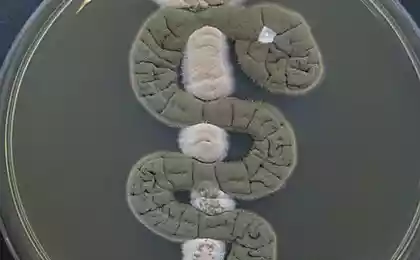433
New antibiotic can kill drug-resistant bacteria

Scientists were able to discover new class of antibiotics that is able to withstand a wide range of pathogenic bacteria that are resistant to existing treatment.
The most enjoyable moment in this scientific discovery was the fact that during numerous laboratory experiments, the bacteria failed to develop resistance to the new drug, which researchers have named Teixobactin. A study by British scientists behind the discovery of the antibiotic, was published in the journal Nature on 7 January 2015.
"Taikomochi is a very promising candidate for effective therapies against drug-resistant pathogens that have been successfully proven in numerous trials on laboratory animals," wrote the researchers in their report.
The problem of drug-resistant bacteria is a serious threat to humanity, and the search for effective antibiotics capable of resisting such pathogens, it is a very difficult task. Scientists had to grow more than 10 000 strains of bacteria in their natural habitat. The researchers then isolated compounds secreted by bacteria and began to apply them against disease-causing pathogens.

Antibiotic Taikomochi was found among these compounds. Experiments in mice have demonstrated its high efficacy against tuberculous Mycobacterium that causes tuberculosis as well as against Staphylococcus aureus. Some strains of these bacteria are extremely resistant to most antibiotics, making treatment of diseases caused by them is very problematic.
"Despite the fact that our research is still at a very early stage, this is very good news. The development of new antibiotics has stalled badly in recent years, while the majority of bacteria become resistant to drugs", — told reporters one of the British researchers Dr. Richard Seabrook.
Taikomochi kills bacteria by binding to fat molecules in its cell wall, thus disrupting its integrity. Most of the other antibiotics fight bacteria by destroying the proteins inside them. Genes encoding these proteins are constantly mutating, so the bacteria quickly become resistant to treatment. Attack on fat cells to avoid the bacteria developing resistance to new antibiotics for a long time.
Another antibiotic — Vancomycin — that uses a similar mechanism, and pathogenic bacteria, it took about 30 years to develop resistance to it. The researchers note that a new drug can be effective for several decades that medicine is an excellent result.
Source: hi-news.ru























